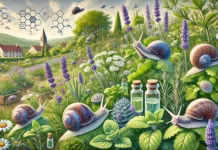V filmčku si lahko ogledate čudovite posnetke cvetenja kaktusov, ki od 6 do 8 ur dolg proces praviloma nočnega odpiranja cvetov zgostijo v nekaj deset sekund dinamičnega dogajanja. Več posnetkov je tu: Time Lapses » Echinopsis.com.
Še zanimivost o fotosintezi pri kaktusih:
Most plants photosynthesize in the daytime, opening pores in their leaves to allow carbon dioxide gas to diffuse in, and then using the ambient solar energy to stitch the harvested carbon and water into sugary fuel.
Opening a plant’s stomata in sunlight, however, means a lot of stored water ends up evaporating — which may be fine for the average temperate-zone bush, but not for a desert dweller.
So the cactus has evolved a multistage approach to photosynthesis. It waits until after dark to widen the stomata on its body and absorb carbon dioxide, stashing the gas as an acid until the next morning. At that point, the radiance of the sun can be exploited for sugar-making while the succulent’s stomata stay safely shut.
Some researchers are trying to engineer this nocturnal talent into standard crops, in order to allow cultivation of marginal lands using a fraction of the water currently devoted to agriculture. (Vir: As Rains Ease in the West, Cactuses Shine Brighter Than Ever – The New York Times)
















